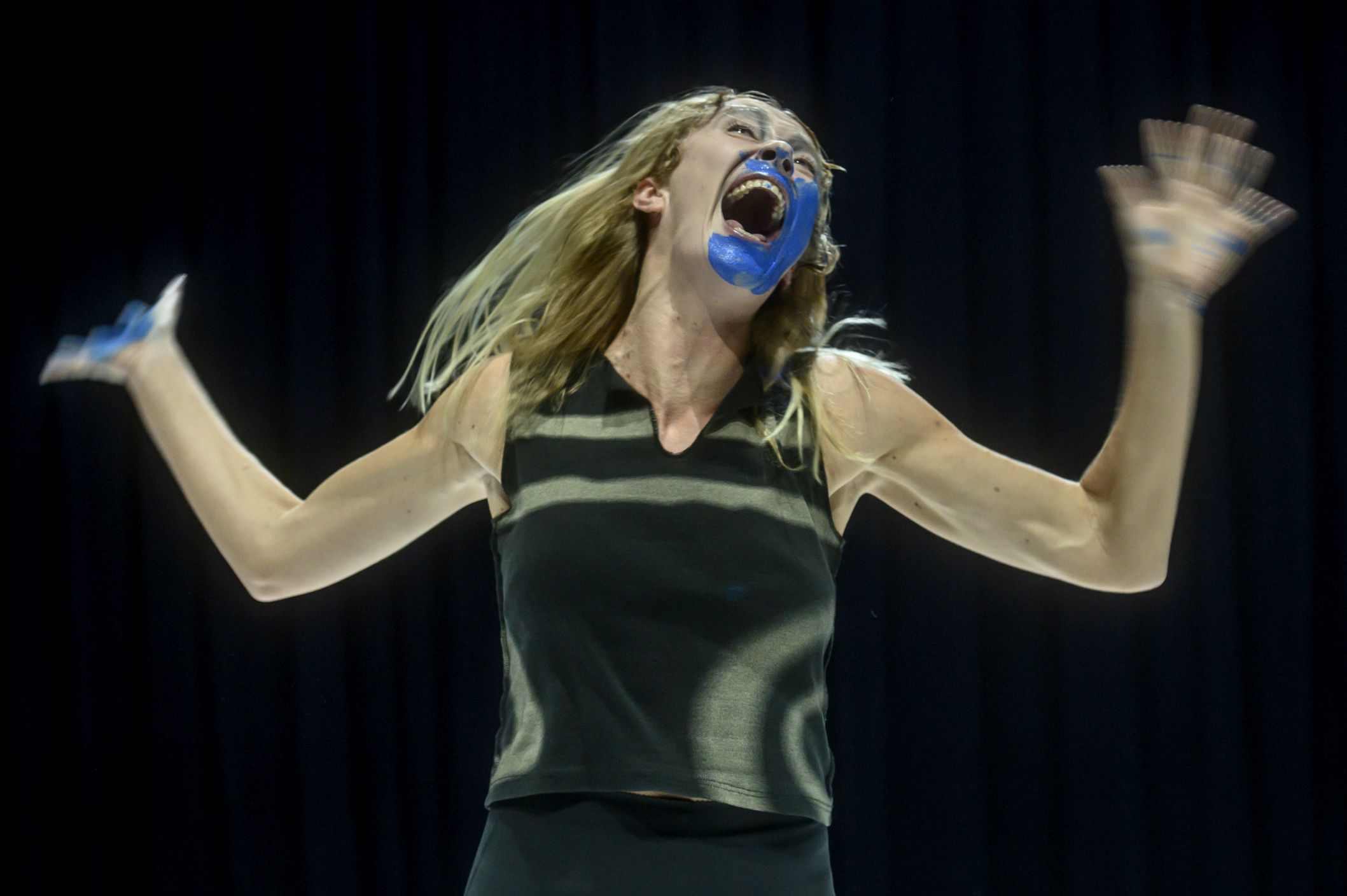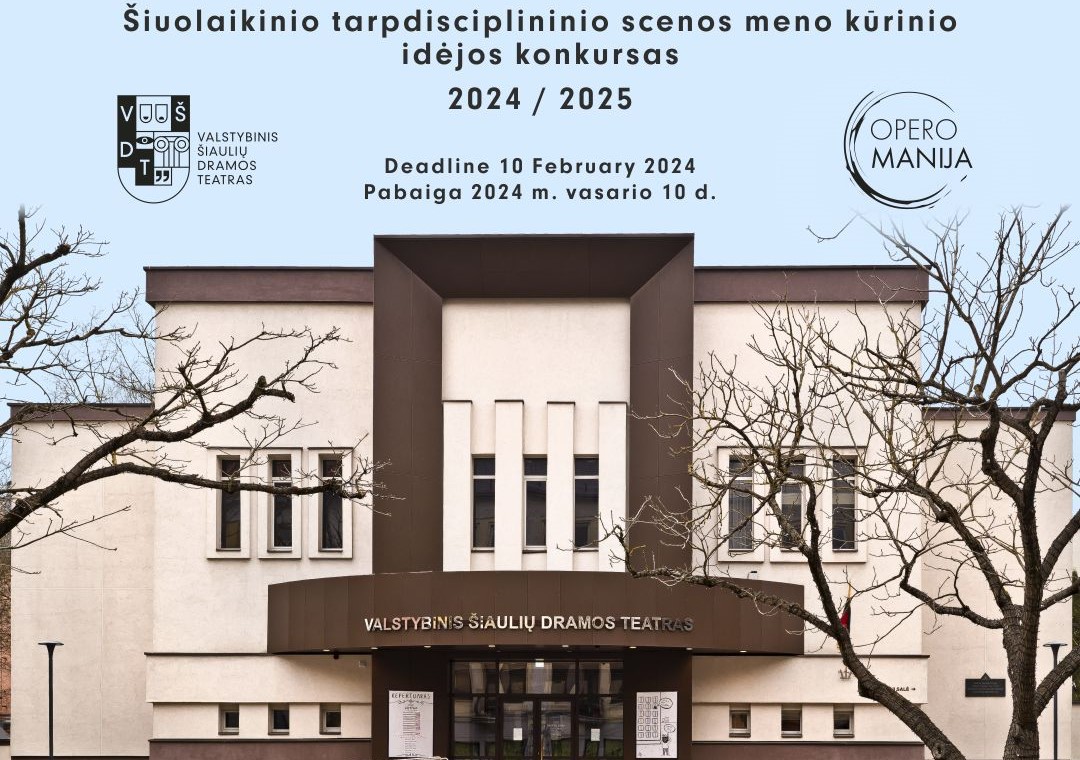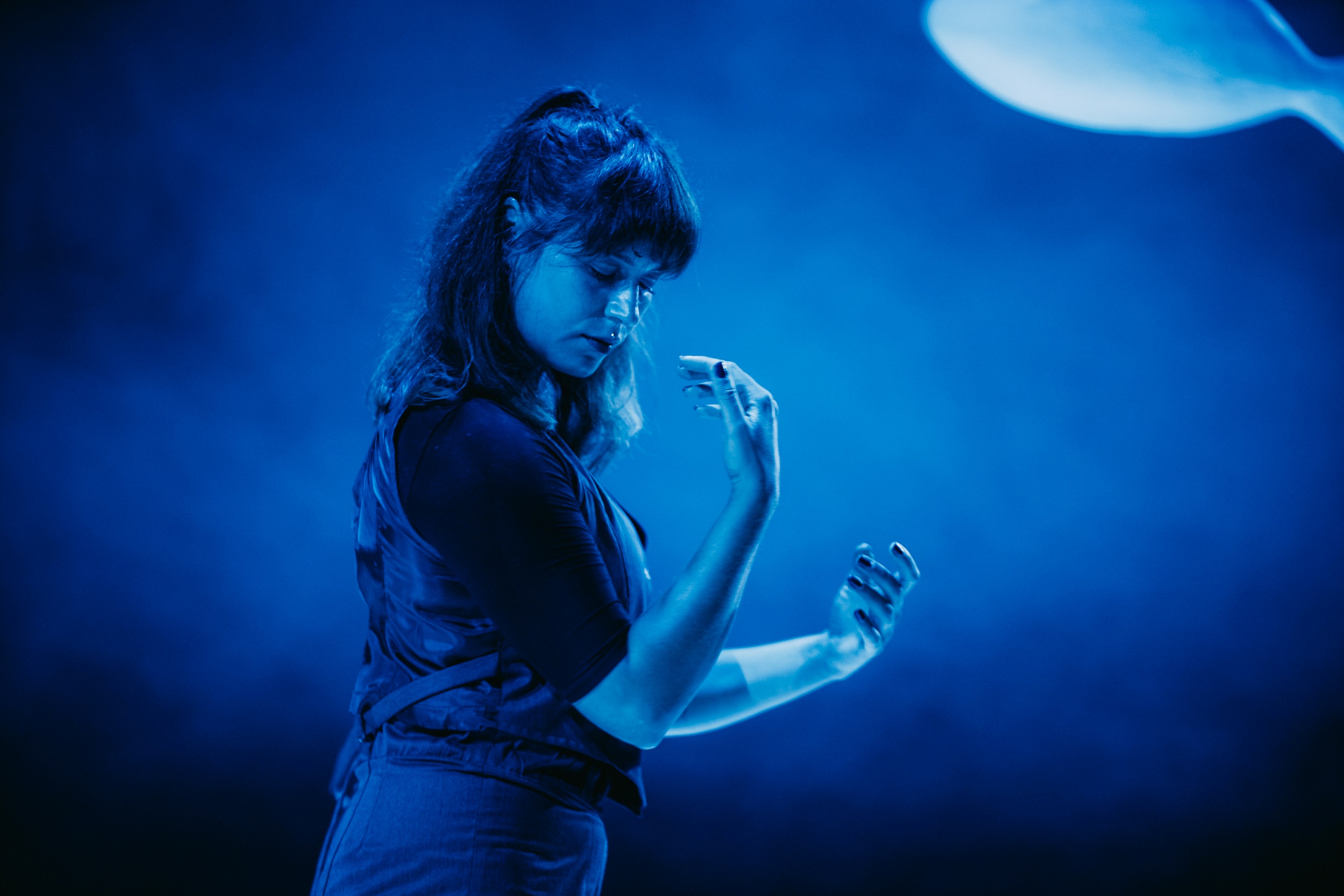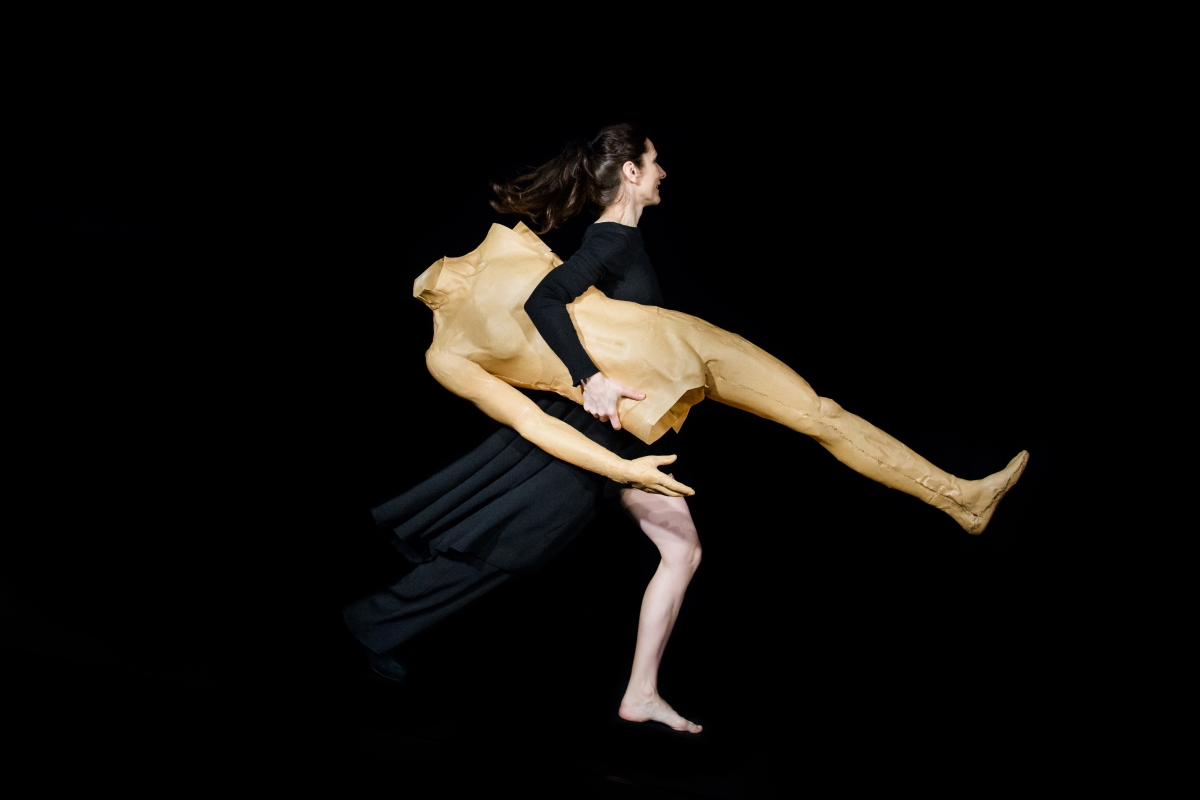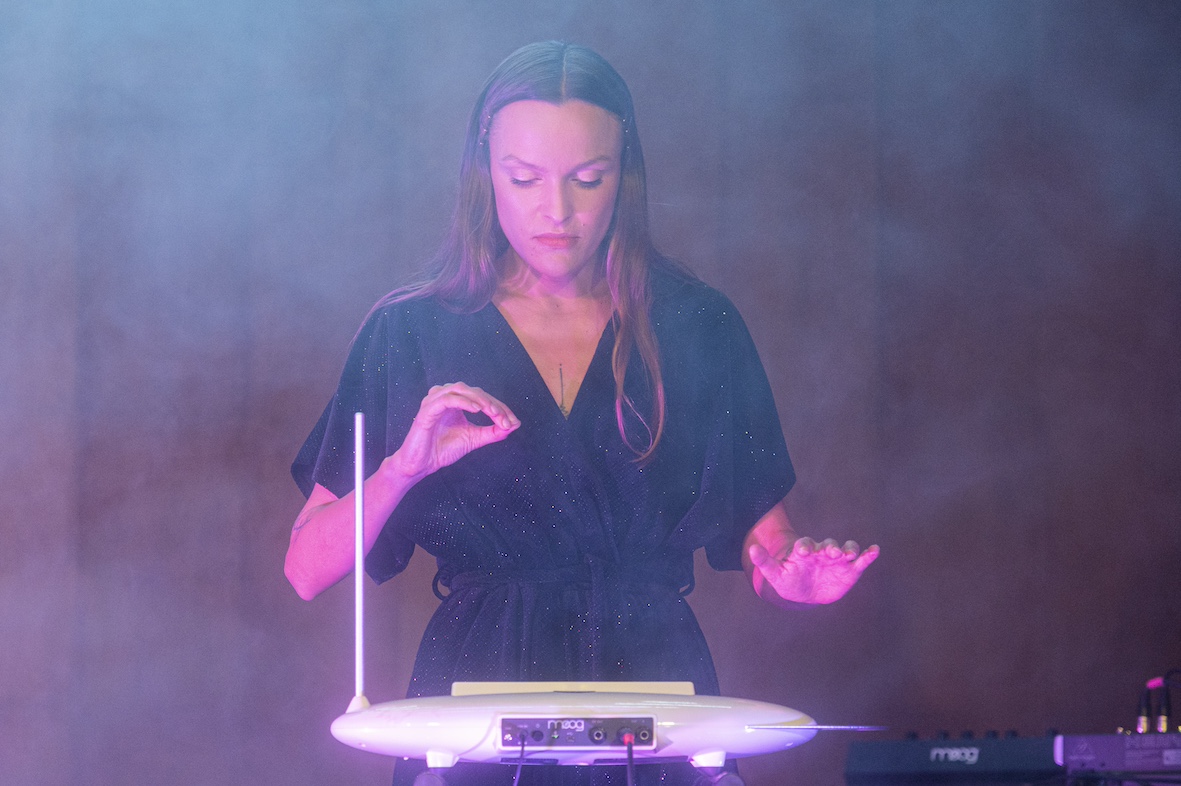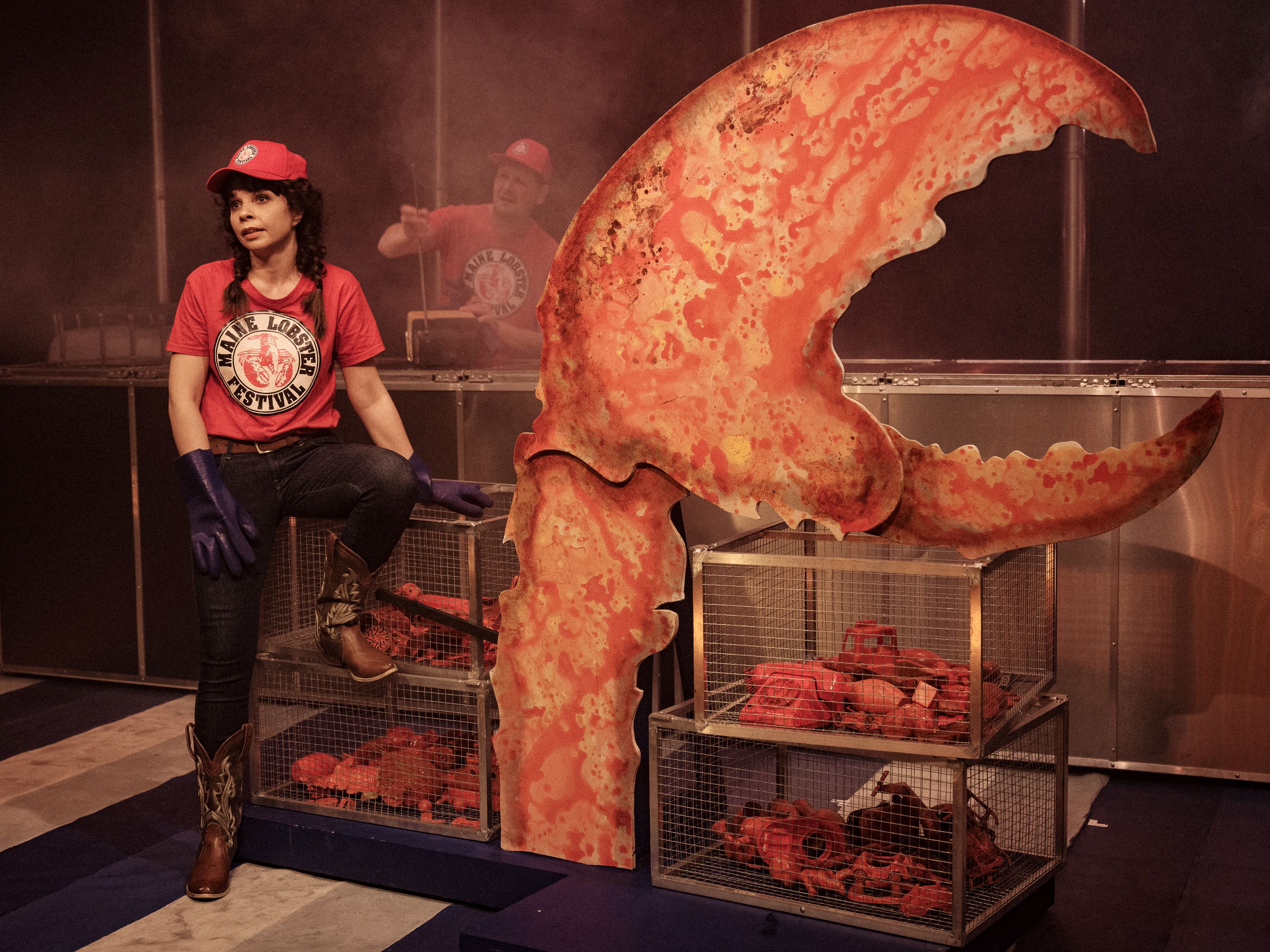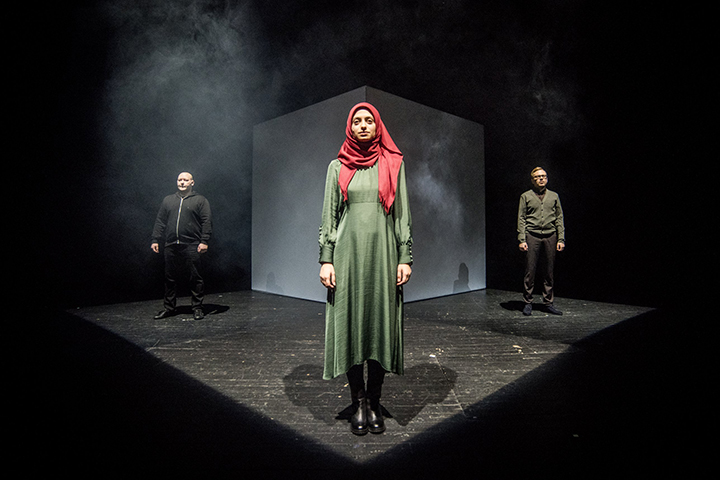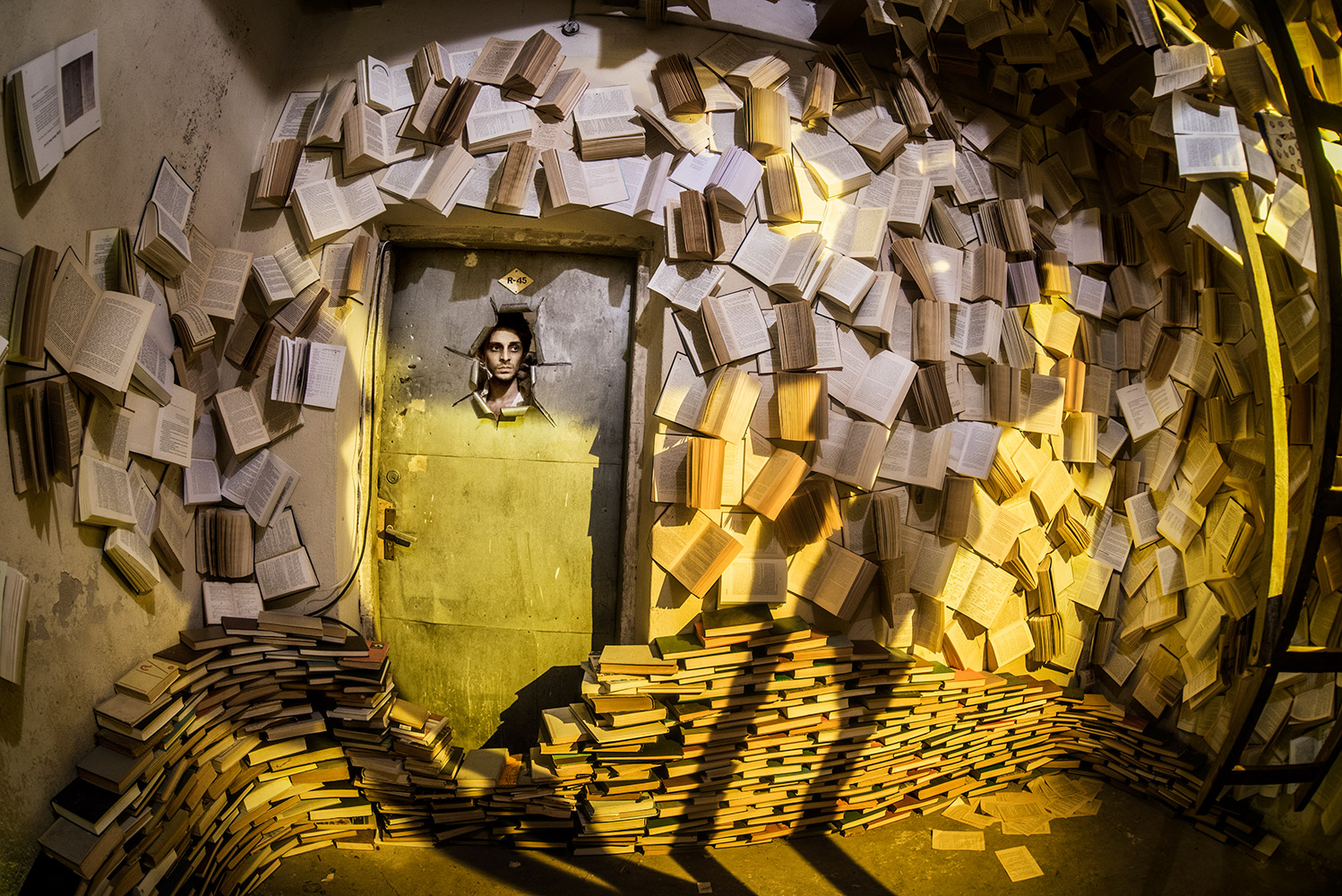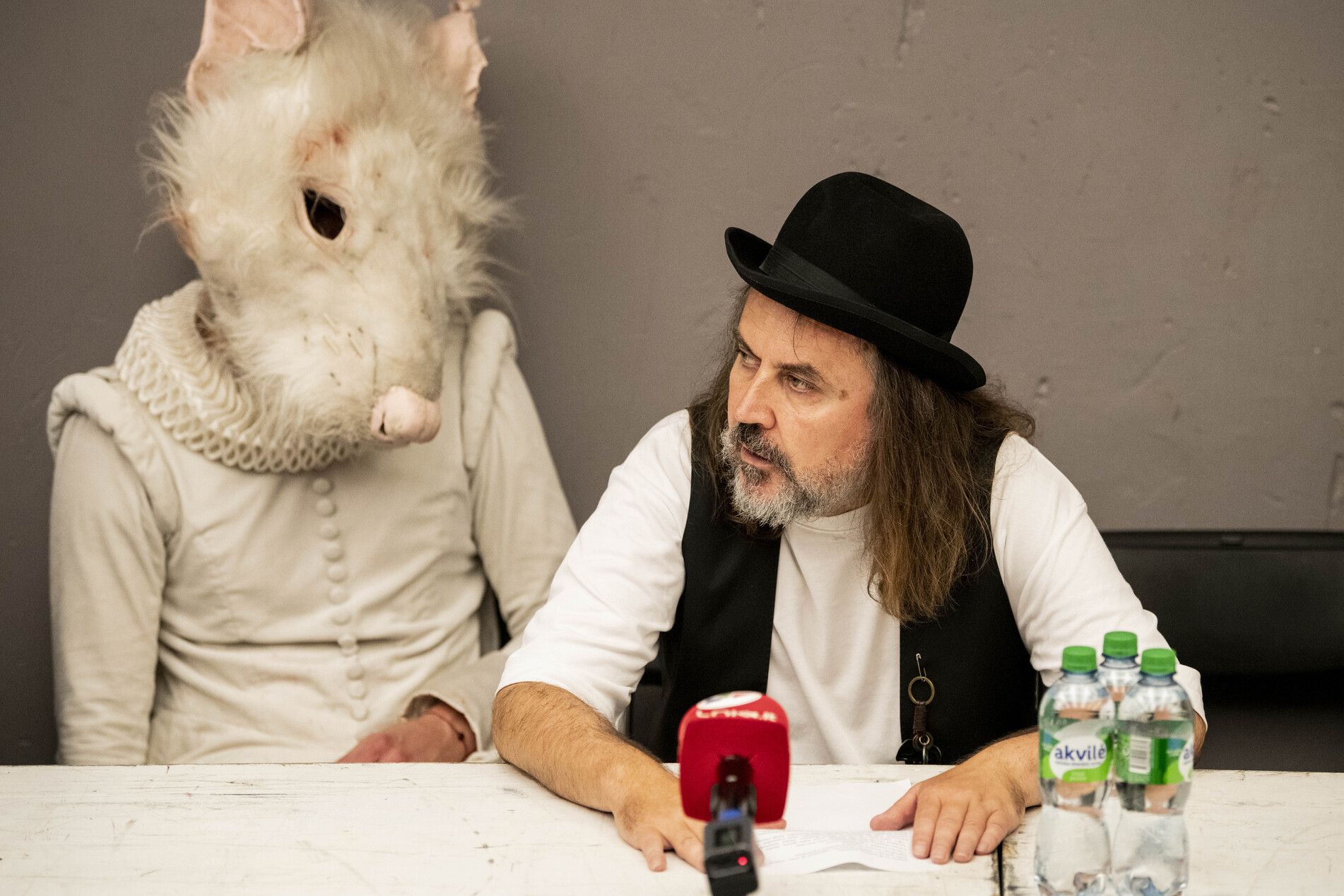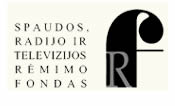Laura Kutkaitė is one of the most prominent and exciting young theatre directors on the Lithuanian stage. After gaining a BA in philosophy at Vilnius University, Kutkaitė studied for a BA in theatre directing at the Lithuanian Music and Theatre Academy and became a theatre director. Her achievements so far consist of three productions: Phaedra’s Love (Oskaras Koršunovas Theatre, 2019), The Silence of the Sirens (Lithuanian National Drama Theatre, 2022) and her current première The Breast of Tiresias (Lithuanian National Drama Theatre, 2023).
According to Greek mythology, Tiresias was a blind prophet. One of the best-known details about him is that he spent seven years living as a woman, as a punishment from the gods for killing a pair of snakes. In 1917, a play by the French writer Guillaume Apollinaire, one of the earliest Surrealist works, turned this story upside-down: a woman called Thérèse, not wanting to have children and wait on a husband, lets her breasts fly away, becomes Tiresias, and begins to live the life she wants to live. These two stories together present an interesting paradox: it is a punishment for Tiresias to become a woman, but it is salvation for Thérèse to become a man.
Laura Kutkaitė takes on this and other themes surrounding it, together with the creative team and the actors, who are all credited as co-creators of the production.
The words ‘contemplation’ and ‘reflection’ are perfect for describing the production. The creative team steers away from choosing a clear path through a Surrealist play (maybe it is foolish to assume there is one?), and instead travel through associations, crafting the rich and dense fabric of the performance. Taking their inspiration from the text, they touch on how we understand the family and gender roles, and, most importantly, the play analyses the difficulties of existing in society as a woman, through the character of Thérèse / Tiresias (played by Aistė Zabotkaitė and Dalia Michelevičiūtė).
The production pinpoints precisely the tragedy of the play, and highlights the despair of Thérèse’s choice, a fatal dilemma that is not at all foreign to the contemporary woman: in order to exist in the world in a fulfilling way, to be heard and understood, and to be able to express oneself unhindered, one has to ‘become a man’. We see lots of cases of this phenomenon manifesting itself today, when women who want to be taken seriously play down their femininity, for they know it will be taken as a sign of weakness. How often do we hear stories of attractive and well-dressed women who are portrayed as dumb, or women losing their job because of the desire to start a family? Why does the dilemma between choosing a career and choosing a family exist?
Like other productions by Laura Kutkaitė, The Breast of Tiresias also relies heavily on the language of symbolism, sound and movement. It is thrilling to analyse the storylines and meanings hidden in the soundtrack by the composer Agnė Matulevičiūtė and the movements of the choreographer Agnietė Lisičkinaitė. An important piece of symbolism that is also a very creatively used musical instrument is a megaphone. It is used by Society (performed by Vitalija Mockevičiūtė), sadly but accurately, to express their primitive views on the content of the play (downgrading it to one where ‘women become men and men bear children’), and vent its anger on the subject of the ‘deranged’ world (seemingly meaning a little less bound to ‘traditional’ gender roles).
Later, the megaphone becomes a musical instrument in the hands of Tiresias and Thérèse: the static, calm silence of the megaphone feels as if it is waiting for somebody’s words, but it attacks us with a sharp ringing once the microphone gets too close to it. During the play we can also hear the motif of sirens, but always prematurely cut off, leaving us with a feeling of physical discomfort, as if with a sense of being unable to fully express ourselves, a demand for self-control, a feeling of words stuck in one’s throat.
Meanwhile, the movement (together with the minimalist scenography by Paulina Turauskaitė, and the cold lighting by Julius Kuršys) strings the performance into a surreal sequence of imagery that does not seem too far from the aesthetics of Robert Wilson. Through dance, movement resembling pantomime, and scenes of physical comedy, we see the creative team talking (and laughing) about things that, just as in translation, would lose something if they were put into words. How absurd are the gestures used in masculine interactions: abrupt handshakes, and the inability to hug without violently slapping each other on the back.
Masculinity, as something that still retains its place in life as being superior to femininity, is treated with irony in the play, and it gets some help from the cast to deride it even further. Apollinaire mocks his creation of the Husband: when Thérèse leaves, he decides to take up birthing babies himself. Since the authority of a man cannot be compromised, birth becomes an extremely masculine activity, and the Husband excels in it more than any woman could ever have done. In only one day, he births 40 049 children, who are all, from their first breath in this world, successful in whatever careers they go on to pursue. The creative team picks up on this joke, and takes a much-needed further step in order to really drive the point home, when during a talk show, the Husband (Domantas Starkauskas) is interviewed about his success. As it turns out, out of thousands of children, he did bear one girl, a painter. Wonderful absurdity: this is the only fact in the whole story that makes the brain of the host (Rytis Saladžius) short circuit: what can that ‘little painter girl’ do? The tragi-comic, absurd humour subtly marks the frustrations of living in a misogynistic society.
The Breast of Tiresias and the earlier production by Kutkaitė at the Lithuanian National Drama Theatre create a vivid diptych that lets us feel the development of her style: both productions are an aesthetic yet deep manifesto, a captivating protest. Kutkaitė manages to talk about extremely important themes that seem to have gone dull in the eyes of society (like the #metoo movement or sexism), and to remind us that despite being tired of informational noise, these problems have not gone away.
Maybe what makes the work by this director unique is that, despite the themes that are easily reduced, and often are, to a slogan on a poster, we are, after all, getting a production, not only a statement, thoughts and discourses that unfold by the use of theatrical means, not a stage. It is not trying to state an opinion by means of using the stage as a spotlight, and the spectator as one who is (by the rules of theatre etiquette) bound to sit and listen. Instead, a discourse comes as a gift, wrapped in multiple boxes and sheets of paper, arousing the excitement to unfold it.
The Breast of Tiresias is a rare piece of work which skilfully employs theatrical chiaroscuro, or contrast. Humour highlights despair. Silence magnifies a scream. The spectator, pleased with laughter, accepts the later fury of Thérèse and all the much darker moods of the play that lurk behind the playfulness of Surrealism. Strange to say, both The Silence of the Sirens and The Breast of Tiresias offer a fun evening at the theatre, for they are productions in which laugher hits harder than in an ordinary comedy. And, thankfully, the tragedy touches us just as deeply.
Publikaciją finansuoja Lietuvos kultūros taryba

